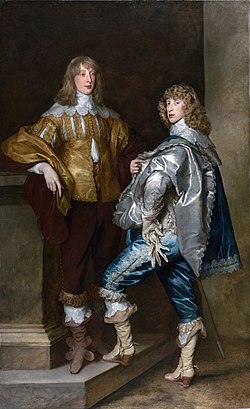'Drunken Silenus supported by Satyrs' was possibly painted by Anthony van Dyck in about 1620. Silenus was the teacher and companion of Bacchus, the god of wine; he is often shown supported by satyrs because of his age and drunken condition. This painting hangs in Room 31: http://bit.ly/2d9VFXu
What catches your eye first when you see "Marchesa Elena Grimaldi Cattaneo"? A servant shields the resplendent marchesa with a parasol as she sweeps out onto the terrace of her palazzo, eyeing us watchfully. The marchesa’s exceptional and disproportionate height emphasizes her stature, literally and figuratively.
Does this remind you of any portraits we've looked at before?
Sir Anthony van Dyck, "Marchesa Elena Grimaldi Cattaneo," 1623, oil on canvas, National Gallery of Art, Washington, Widener Collection, 1942.9.92

Lord John Stewart, c. 1638 (left), pictured with his younger brother Lord Bernard Stewart (1623-1645), by Sir Anthony van Dyck
the prodigy Anthony van Dyck
Here’s a self-portrait by Flemish artist Anthony van Dyck, born #onthisdayin 1599 http://ow.ly/KAZT1

沒有留言:
張貼留言